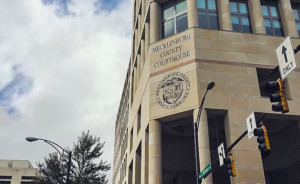 Your first court appearance in Utah can feel overwhelming, especially if you’ve never been through the legal system before. Understanding what to expect and knowing your rights is crucial, whether you are appearing for a felony, misdemeanour, or any other matter. At this stage, the judge will explain your rights, the charges you face, and give you a chance to enter a plea.
Your first court appearance in Utah can feel overwhelming, especially if you’ve never been through the legal system before. Understanding what to expect and knowing your rights is crucial, whether you are appearing for a felony, misdemeanour, or any other matter. At this stage, the judge will explain your rights, the charges you face, and give you a chance to enter a plea.
It is recommended to dress professionally and arrive early, with all necessary documents and any evidence or notes you may need. It is recommended to dress professionally and arrive early, with all necessary documents and any evidence or notes you may need. Just like you wouldn’t face an insurance company after a car accident without knowing your policy, walking into court without speaking to criminal defense attorneys can leave you unprepared for what’s ahead. They help clarify procedures and possible outcomes, which can ease the uncertainty of your first appearance. The right guidance early on can make a noticeable difference—much like having proper coverage before filing a major claim.
Key Takeaways
- The initial hearing explains your rights and charges.
- Arriving prepared and professionally dressed is important.
- Having professional legal advice helps protect your interests.
Understanding Your First Court Appearance in Utah
A first court appearance in Utah sets the stage for the legal process ahead and outlines a defendant’s rights and obligations. The initial hearing introduces legal professionals, presents the charges, and ensures all parties understand the next steps, including possible pleas and evidence disclosure.
Purpose and Structure of the Initial Hearing
The first appearance generally occurs soon after arrest for offences such as OWI, assault, or theft. In district court, this is called the initial appearance, while some lower-level misdemeanors may use the term arraignment. The main purpose is to ensure the defendant knows the charges, including details like the reported BAC in OWI cases.
The judge advises the defendant of their rights and confirms whether they have legal counsel. Bail and pretrial release conditions may be set, and the process of reviewing and exchanging evidence is initiated. No verdict or conviction is decided at this stage; it is designed mainly to inform and set a framework for what follows in the case.
Defendants are typically asked to enter a plea—guilty, not guilty, or no contest—and the court schedules any future hearings. If the offence allows for a possible plea agreement, it may be introduced here but is more commonly discussed at later hearings.
Key Legal Professionals and Their Roles
Several legal professionals participate in a Utah court appearance:
- Judge: Presides over the court, informs the defendant of rights, sets bail, and schedules next steps.
- Prosecution (often called the district attorney or Crown in Canada): Presents the state’s case, submits evidence, and discusses any plea agreement possibilities.
- Defence Attorney: Represents the defendant. If the defendant cannot afford one, a public defender may be appointed at this hearing.
Court clerks and bailiffs are also present but have supporting roles. The prosecution and defence exchange evidence and the judge ensures fair procedures, but the focus of this appearance remains on clarity rather than argument. Each party’s role is clearly defined to safeguard the legal process and the defendant’s rights.
What Happens During the Initial Court Process
During a first court appearance in Utah, defendants encounter critical steps that determine the direction of their case. This process involves the formal presentation of charges, discussion of potential outcomes like fines or probation, and the opportunity to enter into plea negotiations.
Presentation of Charges and Plea Options
At the initial appearance, the judge or magistrate presents the formal charges against the defendant. The charges may vary, ranging from misdemeanours and infractions to more serious felonies. The prosecution provides criminal information outlining the case details.
Defendants are notified of their legal rights at this stage, including the right to remain silent and the right to legal counsel. If they cannot afford an attorney, one is appointed for them. Next, the judge asks how the defendant pleads: guilty, not guilty, or no contest. Each plea can result in different next steps and consequences. Legal professionals often advise on the best plea based on the specific facts of the case.
The Role of Plea Bargains in Utah Courts
Plea bargains are agreements made between the defence and prosecution, often with the involvement of the judge. A plea bargain may allow the defendant to plead guilty to a lesser charge or receive a reduced sentence.
These agreements can expedite the court process and help avoid a lengthy trial. Legal professionals commonly recommend plea arrangements if the evidence against the defendant is strong, or when the prosecution offers favourable terms. Typical outcomes of plea bargains include lesser fines, shorter probation periods, or fewer community service hours.
Conclusion
Attendees at their first court appearance in Utah can expect a process designed to inform them of their rights and the charges against them. Preparation helps ensure they understand what will happen and how to act when responding to the judge or presenting their case.
A defendant may be appointed an attorney if they cannot afford one, and it’s crucial to listen to instructions from court staff and the judge. Following the steps and understanding expectations makes the experience more manageable for everyone involved.
Clear communication and respectful behaviour in court can make a positive difference. Knowing what to expect decreases uncertainty and helps people focus on achieving the best possible outcome for their situation.


